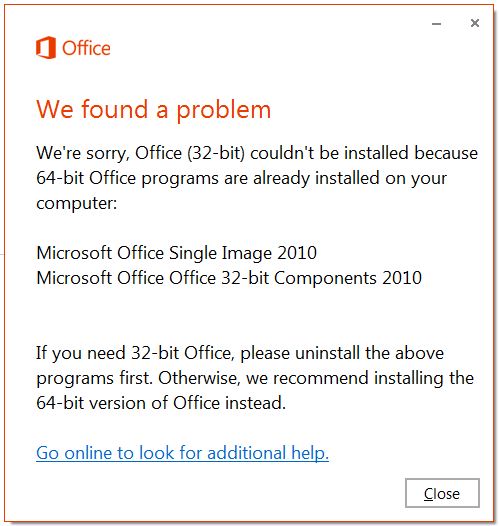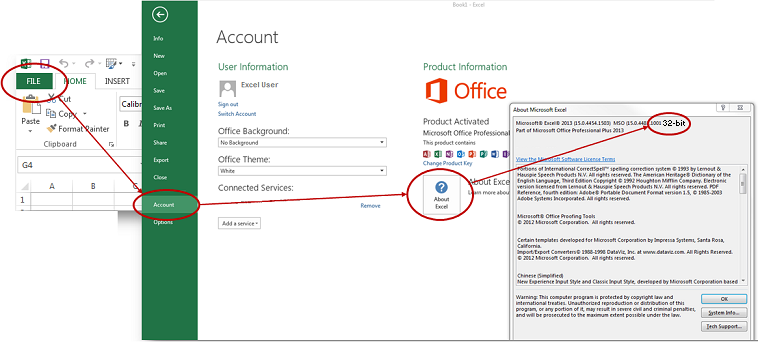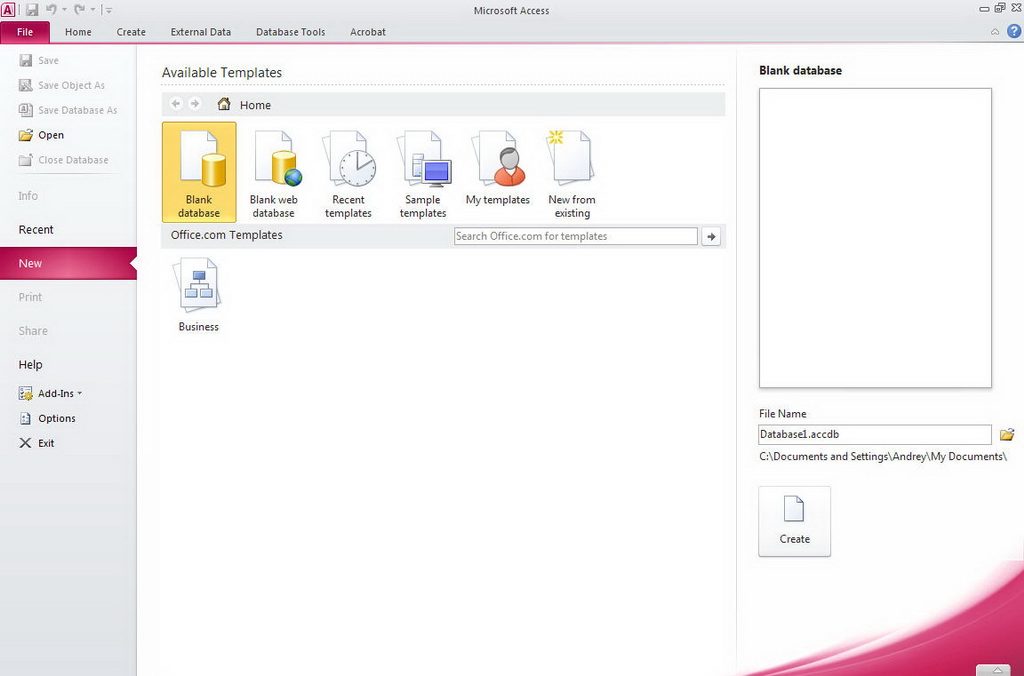

- #Office 2010 64 bit vs 32 bit install#
- #Office 2010 64 bit vs 32 bit driver#
- #Office 2010 64 bit vs 32 bit full#
- #Office 2010 64 bit vs 32 bit software#
- #Office 2010 64 bit vs 32 bit windows 7#
#Office 2010 64 bit vs 32 bit install#
For example, if the Office installer finds Outlook 2010 x86 installed, it won’t allow you to install Word 2010 圆4, so the 32-bit version would have to be removed fully before the 64-bit version could be installed.Īdditionally, if you have any of the following 32-bit applications installed, an installation of Office 2010 64-bit will be blocked:
#Office 2010 64 bit vs 32 bit full#
This is true whether a single Office product is installed or the full suite. The two versions of Office 2010 cannot exist side-by-side on the same physical system. Installing Office 2010 64-bit and 32-bit on the same computer ^ This is the scenario which Microsoft envisages will be the most appropriate for the vast majority of users.



Because the operating system can reference the 64-bit memory address space and can therefore make use of physical RAM above 4GB, the 32-bit version of Office will automatically receive a performance boost when running on 64-bit Windows, due to reduced memory swapping, disk read/writes and disk thrashing in a multi-application environment. The 32-bit version of Office will run fine on 64-bit Windows, as do most 32-bit applications thanks to the x86 emulator WOW64 which runs on all 64-bit versions of the operating system.
#Office 2010 64 bit vs 32 bit windows 7#
Installing Office 2010 32-bit on Windows 7 64-bit ^ Office 2010 server products such as SharePoint Server, SharePoint Foundation and Project Server are supported on the 64-bit version of Windows Server 2008 SP2 and Windows Server 2008 R2. Office 2010 64-bit is supported on 64-bit editions of Windows Vista SP1, Windows 7, Windows Server 2008 SP1 and Windows Server 2008 R2. Obviously only the 32-bit version can be installed on a 32-bit version of Windows, but there should not be the automatic assumption that if you’re running a 64-bit version of Windows, that the 64-bit version of Office is the logical choice. If you are running a 64-bit version of Windows deciding on which version to install will depend completely on how you use Microsoft Office. Windows 7 64-bit has proven to be very popular in both consumer and business environments, and Microsoft has been working hard to ensure that it’s full product suite accommodates both platforms.
#Office 2010 64 bit vs 32 bit driver#
There was comprehensive driver support (eventually) and very few compatibility or stability issues. Installing Office 2010 64-bit on Windows 7 64-bit ^Īlthough Windows XP came in a 64-bit flavour, Windows Vista was the first Microsoft OS to make it especially accessible and feasible for everyday computing.
#Office 2010 64 bit vs 32 bit software#
Software Assurance customers will have access to the media from April 27 th. Customers who buy the physical media will receive both versions. The 64-bit version of Office 2010 will not work on Server 2003 R2 with MSXML 6.0.According to the Microsoft 2010 Engineering blog, customers who have access to download the product media (such as customers with a VL agreement with Software Assurance, and MSDN/TechNet subscribers) will have a choice about which version they would like to download (both are available). For those running 64-bit operating systems, the 32-bit version of Office 2010 is compatible with Windows 7, Vista SP1, Server 2008 R2, Server 2008, and Server 2003 R2 with MSXML 6.0. Dubec also added that the “footprint” of most Office applications have gotten larger-most standalone application disk-space requirements have gone up by 0.5 GB, and the suites have increased by 1.0 or 1.5 GB.įor consumers running 32-bit operating systems, the 32-bit version of Office 2010 is compatible with Windows 7, Vista with SP1, XP with SP3, Server 2008, and Server 2003 R2 with MSXML 6.0. While these two factors were the same requirements for Office 2007, they've doubled since the release of Office 2003, requiring a 233 MHz processor and 128 MB of RAM. "īased on the blog, the minimum requirements consist of a 500 MHz processor and 256 MB of RAM. If your computer is currently running Office 2003, it’s possible that it can run Office 2010 (check the requirements to be sure). If you have a computer with a multi-core processor, it can run Office 2010 even faster. "If you’re purchasing a new laptop or netbook, it can run Office 2010. "If your current computer can run Office 2007, it can run Office 2010," he said. Slated to launch next month, most users will be able to use the new suite on the same hardware used in Office 2007 according to Alex Dubec, Program Manager on the Office Trustworthy Computing Performance team. The official blog for the Microsoft Office 2010 product development group today revealed the system requirements for the upcoming office software suite.


 0 kommentar(er)
0 kommentar(er)
